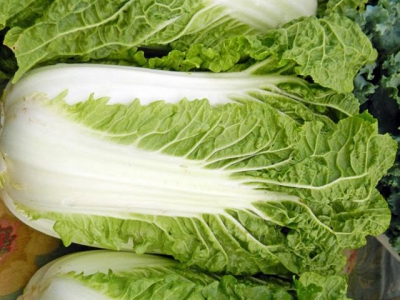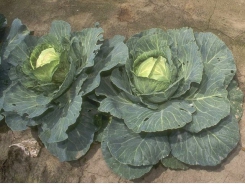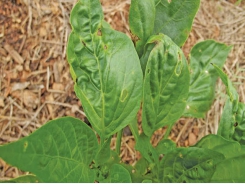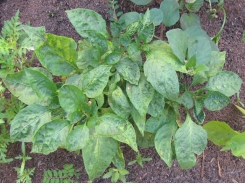Growing Chinese Cabbage in the Vegetable Garden

Growing Chinese Cabbage
Brassica chinensis pekinensis
This vegetable, which is rapidly gaining in popularity, is especially useful to the gardener with little space, for it may be cooked as an ordinary cabbage or eaten raw with salads instead of lettuce. Owing to its late sowing time and speedy growth it may be used as a catch crop after clearing an earlier crop.
When you are growing Chinese cabbage, you should sow, in late June or July, two or three seeds at each growing point at a depth of 12 mm (1/2 in) and at intervals of 300 mm (12 in). When the seedlings emerge, thin to the best individual at each growing point. The plants can alternatively be sown fewer at a time and successionally to achieve harvesting over a longer period. But do not sow too early or the plants may bolt (that is run to seed and develop tough roots).
Growing Chinese cabbage is best on an open site that receives shade from mid-afternoon onwards. If you are not sowing in soil enriched for the previous crop, dig in plenty of compost in the spring; then scatter on a general fertiliser before sowing. Bolting may also be caused by lack of moisture, so keep the soil well watered and weed free. ‘Sampan’, and Fl hybrid, is one of the best of the Chinese cabbages to grow and to eat.
Harvesting is in late autumn: the plants take only about two months to reach maturity.
Recommended varieties: ‘Nagoaka’, early, tall, cos-shaped; ‘Sampan’, F1, conical, slow to bolt; ‘Tip Top’, F1, later than ‘Nagoaka’, and shorter; ‘Wong Bok’, late
- Site: Open, shaded later in the day
- Soil: Good
- Sow: June to July
- Harvest: Late autumn
Có thể bạn quan tâm
Phần mềm

Phối trộn thức ăn chăn nuôi

Pha dung dịch thủy canh

Định mức cho tôm ăn

Phối trộn phân bón NPK

Xác định tỷ lệ tôm sống

Chuyển đổi đơn vị phân bón

Xác định công suất sục khí

Chuyển đổi đơn vị tôm

Tính diện tích nhà kính

Tính thể tích ao hồ



 Effective control of capsicum diseases
Effective control of capsicum diseases  Dealing with spotted wilt
Dealing with spotted wilt